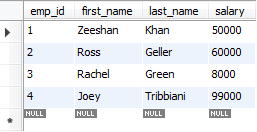1- Data, DataBase, DataModel Types & Infrastructure
What is data?
Data is a collection of a distinct small unit of information.
It can be used in a variety of forms like text, numbers, media, bytes, etc. it can be stored in pieces of paper or electronic memory, etc.
In computing, Data is information that can be translated into a form for efficient movement and processing. Data is interchangeable
What is Database?
A database is an organized collection of data,
So that it can be easily accessed,managed and maintained.
For example, a company database may include tables for products, employees, and financial records.
Types Of Data Models
The three primary types of data models are conceptual, logical, and physical. Think of them as a progression from an abstract layout to a detailed mapping of the database setup and final form:
 |
| Types of Data Models |
--> Conceptual Data Model
Conceptual data models are the most simple and abstract.
Little annotation or data use occurs in this model, but the overall layout and rules of the data relationships are set.
Conceptual data models are frequently used in the discovery stage of a project.
--> Logical Data Model
The logical data model expands on the basic framework laid out in the conceptual model,
but it considers more relational factors.
This model is particularly useful in data warehousing plans.
--> Physical Data Model
Since the physical data model is the most detailed and usually the final step before database creation, it often accounts for database management system-specific properties and rules.
You’ll illustrate enough detail about data points and their relationships to create a schema or a final actionable blueprint with all needed instructions for the database build.
Infrastructure for DATA MODEL
Data Model Infrastructure
Beyond the three main types of data modeling,
organizations can choose from several different design and infrastructure methods for visualizing their data model:
 |
--> Hierarchical Data Model
Hierarchical data models resemble a family tree layout.
Your data entities look like “parents” or “children” and branch off from other data that shares a relationship with them.
--> Relational Data Model
This model is similar to the hierarchical data model,
but instead of parent-child relationships, it maps out the connections among various tables of data.
--> Entity-Relationship (ER) Data Model
The ER data model showcases data entities and creates a diagram to show how they connect to each other.
This model is often used with the relational model to understand how your data should connect in a database.
--> Object-Oriented Data Model
This design method makes complicated real-world data points more legible by grouping entities into class hierarchies.
You’ll often find object-oriented design in the early development stages of multimedia technologies.


Comments
Post a Comment